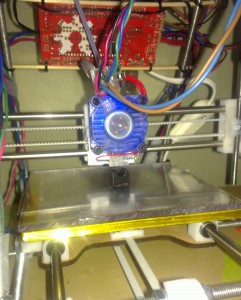I’m in the middle, or rather, approaching the end of, my very first large QtQuick-based project. I cannot tell you that much, just that it includes a rather large code base of QML, and a semi-large run-time environment written in C++. In this blog entry, and probably some more, I’ll tell you about my experiences.
Productivity
The productivity of QtQuick feels amazing when doing small user interfaces. Especially when just putting something cool together to demonstrate the states and transitions abilities of QtQuick. However, as the deadline approaches I’ve learned that QtQuick development is quick only when compared to writing a Qt/C++ user interface consisting of 100% custom widgets.
Working with a design company, I had to identify potential components, write and test those components and then deploy them through-out the user interface. Simply importing full screens from Photoshop and blowing life into them just leads to code duplication.
The end results looks amazing. All that I’m saying is that having graphics on the screen in 15 minutes does not mean that you will be ready to leave by lunch.
Multi-step Transitions
Transitions in QtQuick is just amazing, but when designers start saying things like “scrub the timeline”, “initial movement to give a sense of direction”, et cetera, I hear “add complexity to your puny state-machine”. Currently, QtQuick lacks support for easily defining a transition over a complex path. The provided easing types do a lot – I, as a developer, thing that they look great, but being able to add key-frames to get that extra punch into the animations without having to use multiple states would be great.
One cool thing that I did learn in this process is that implementing a frame-by-frame animation from a set of PNGs is actually quite easy. Simply add a parallel animation group with the rest of your animations and linearly iterate the “currentFrame” property, and use said property in the source property of your image element. Felt like an ugly hack, but worked great!
A Linter
QML really needs lint. My current deadline is due to smack me over the head real soon, so I have not got the time to looking into what can be done. However, double-checking names of states, ensuring that image files exist, looking for name-space issues (will talk about this later), et ceterea would be really helpful.
As Qt is open source, I guess it is easy to access a tree representing the parsed source. From there, it is simply a matter of applying rules. But, I have not looked in to this at all, so it might be much harder than I imagine.
 Having experienced the MakerBot at work, I bought a EMaker Huxley last year. Once you get into the habit of being able to print any mechanical piece that you need (almost), you are forever hooked. Now, I’m looking to build a larger machine and am sourcing material for a building larger RepRap Mendel Prusa V2.
Having experienced the MakerBot at work, I bought a EMaker Huxley last year. Once you get into the habit of being able to print any mechanical piece that you need (almost), you are forever hooked. Now, I’m looking to build a larger machine and am sourcing material for a building larger RepRap Mendel Prusa V2.